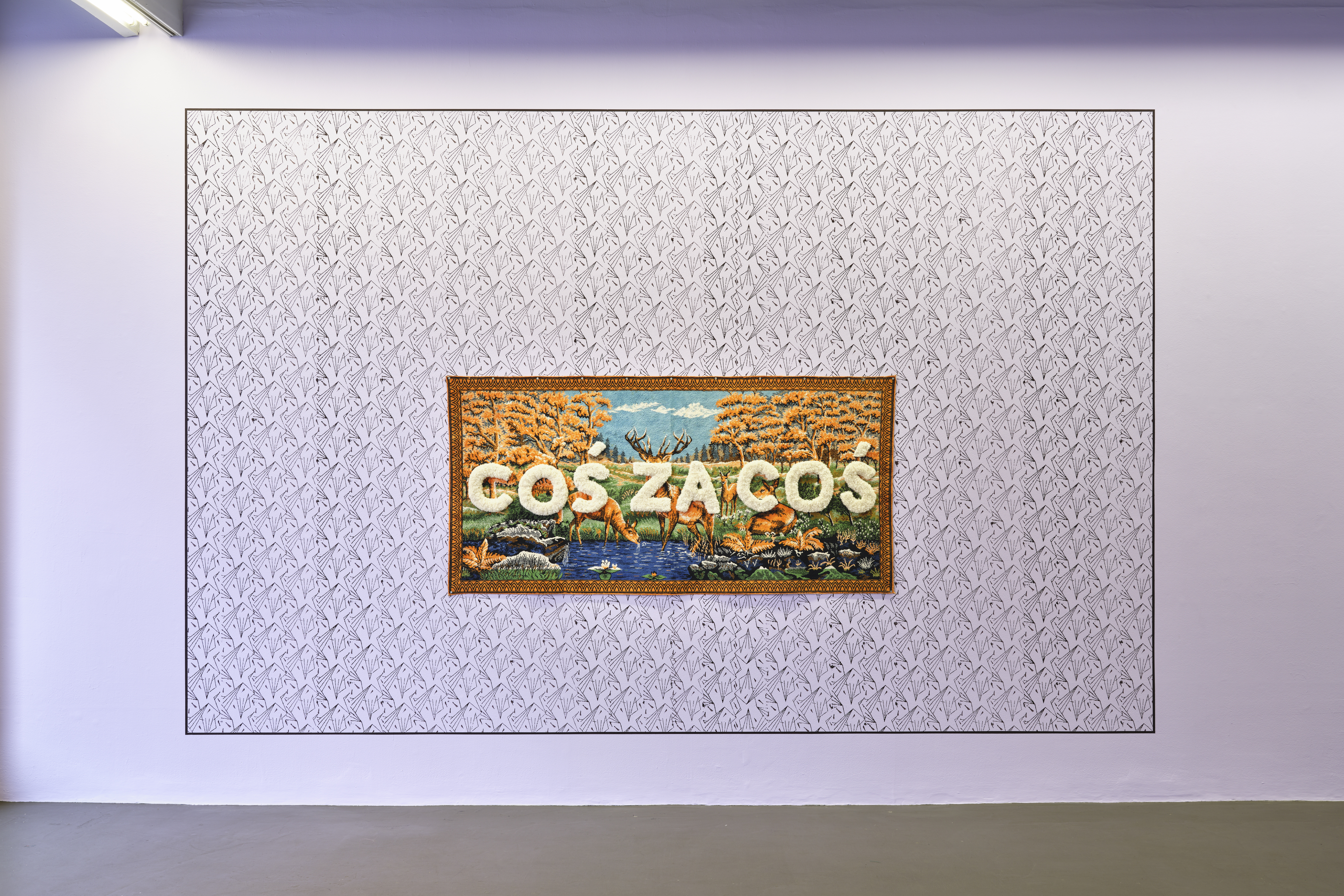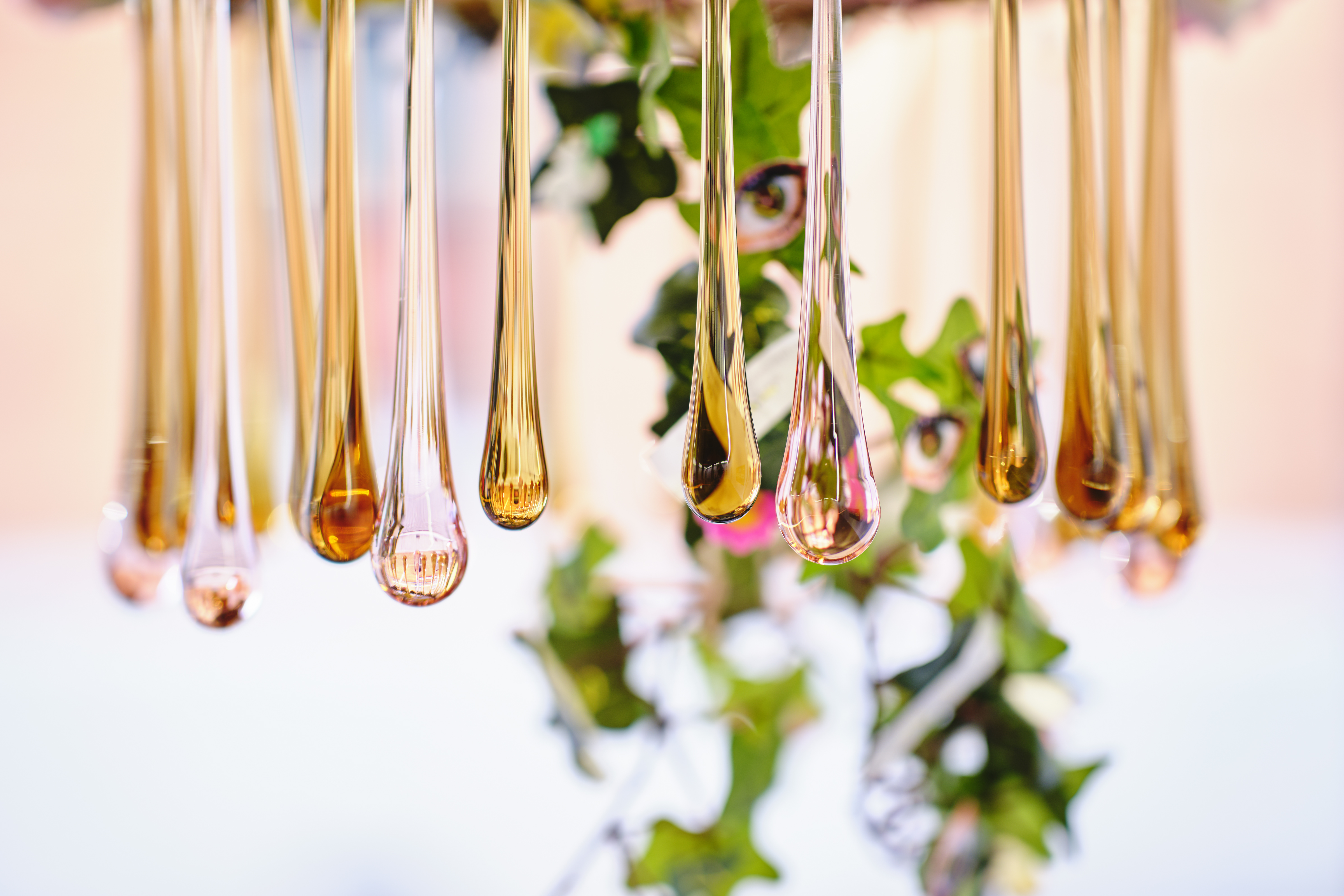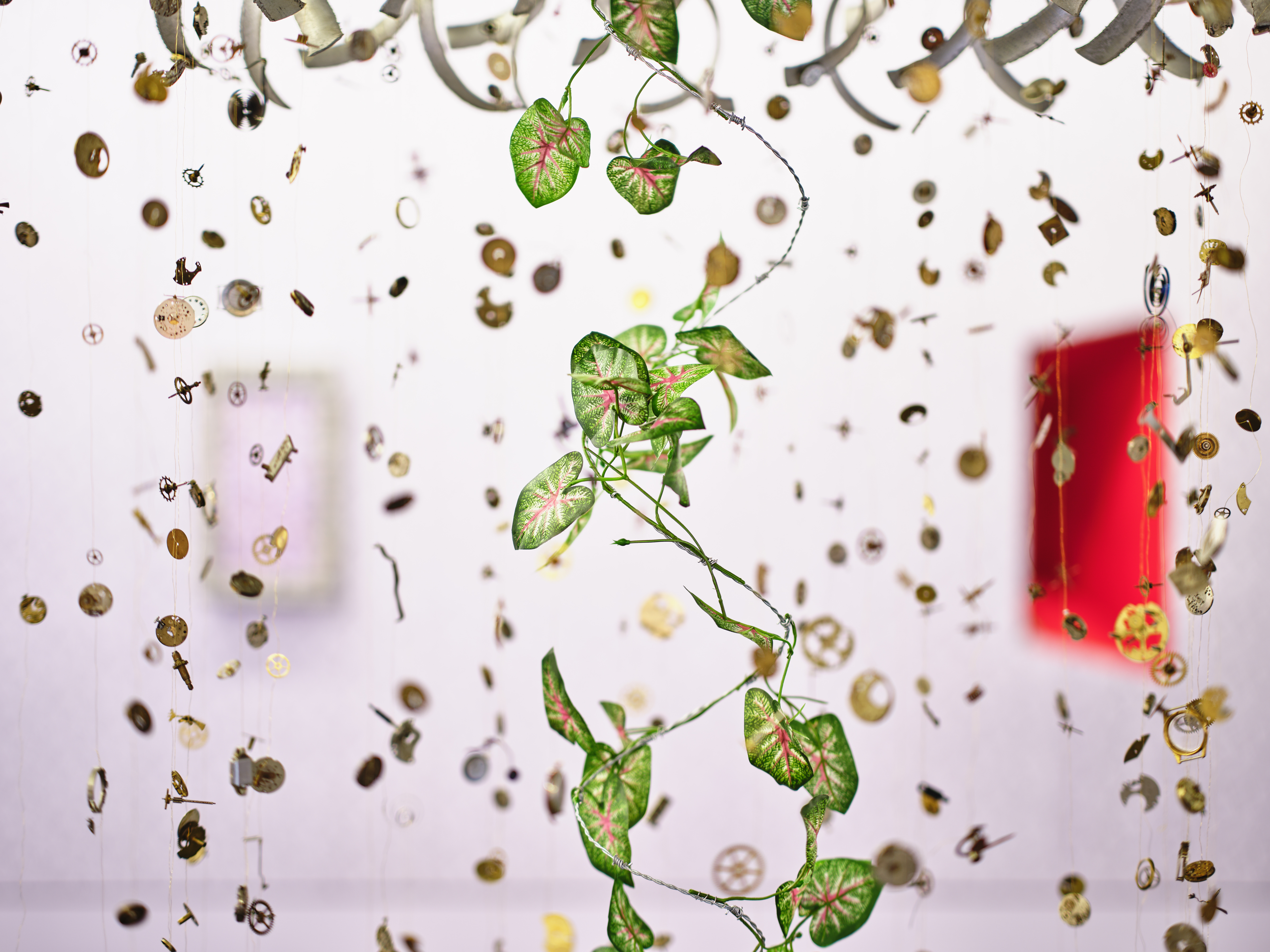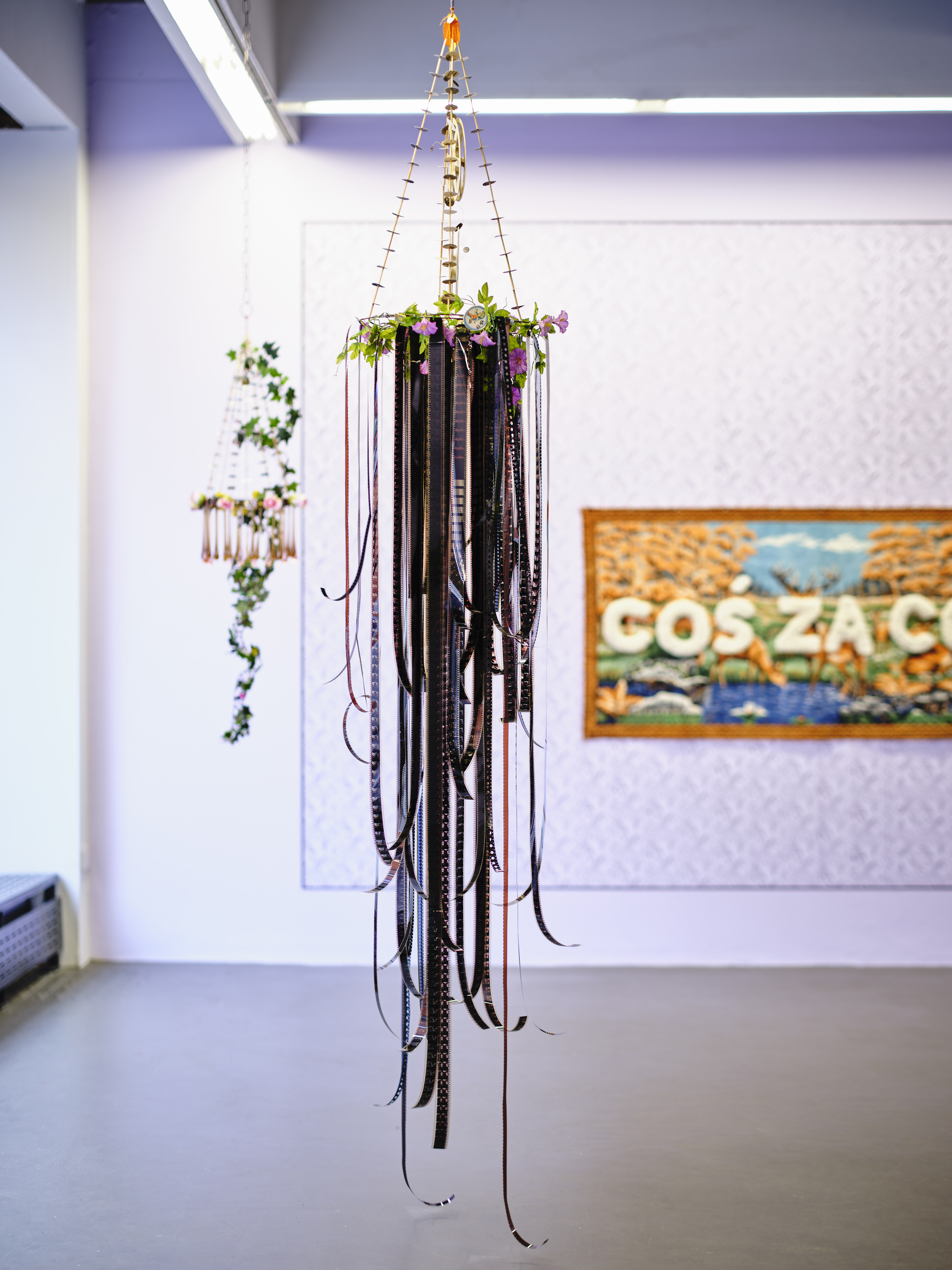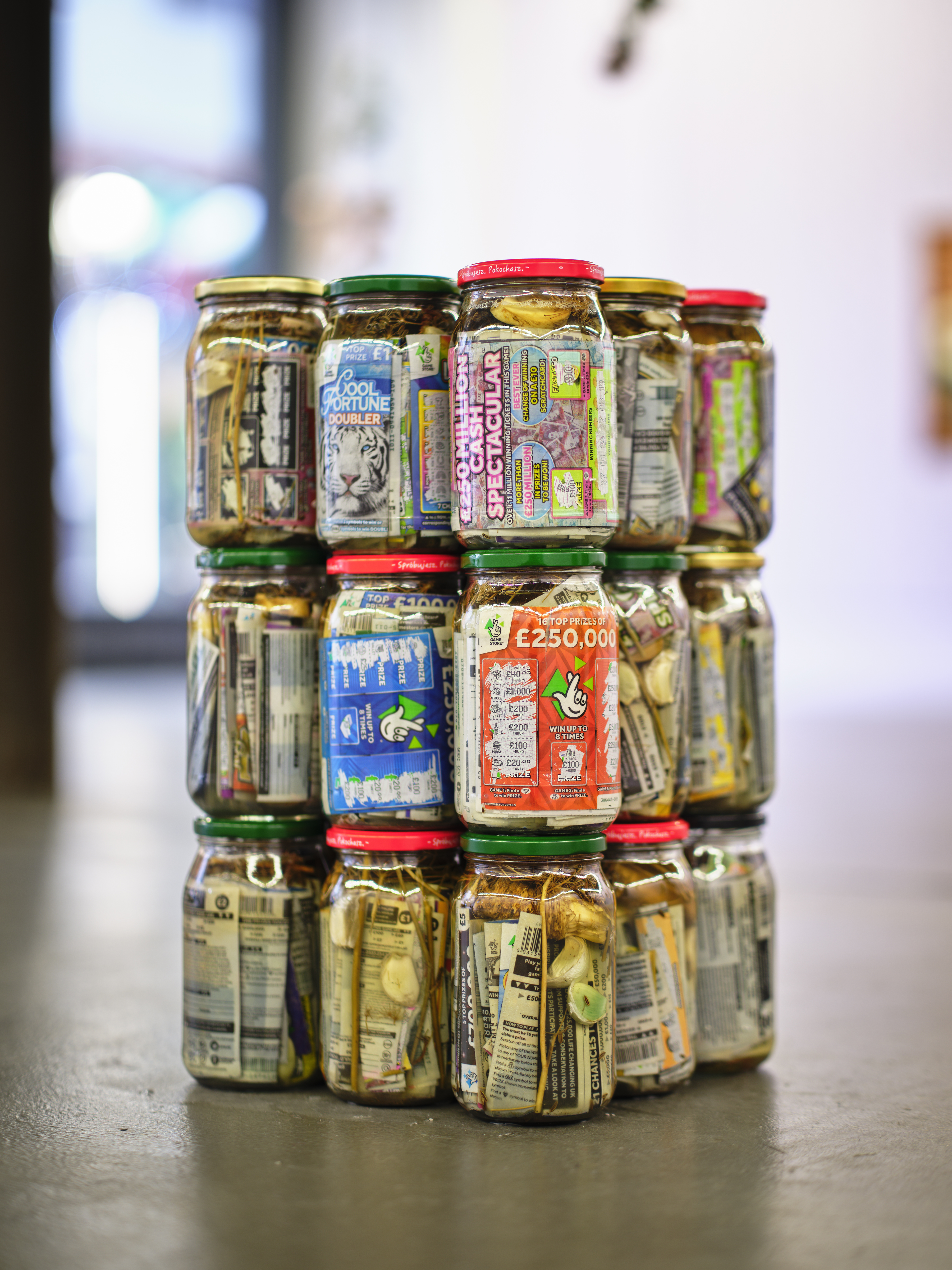



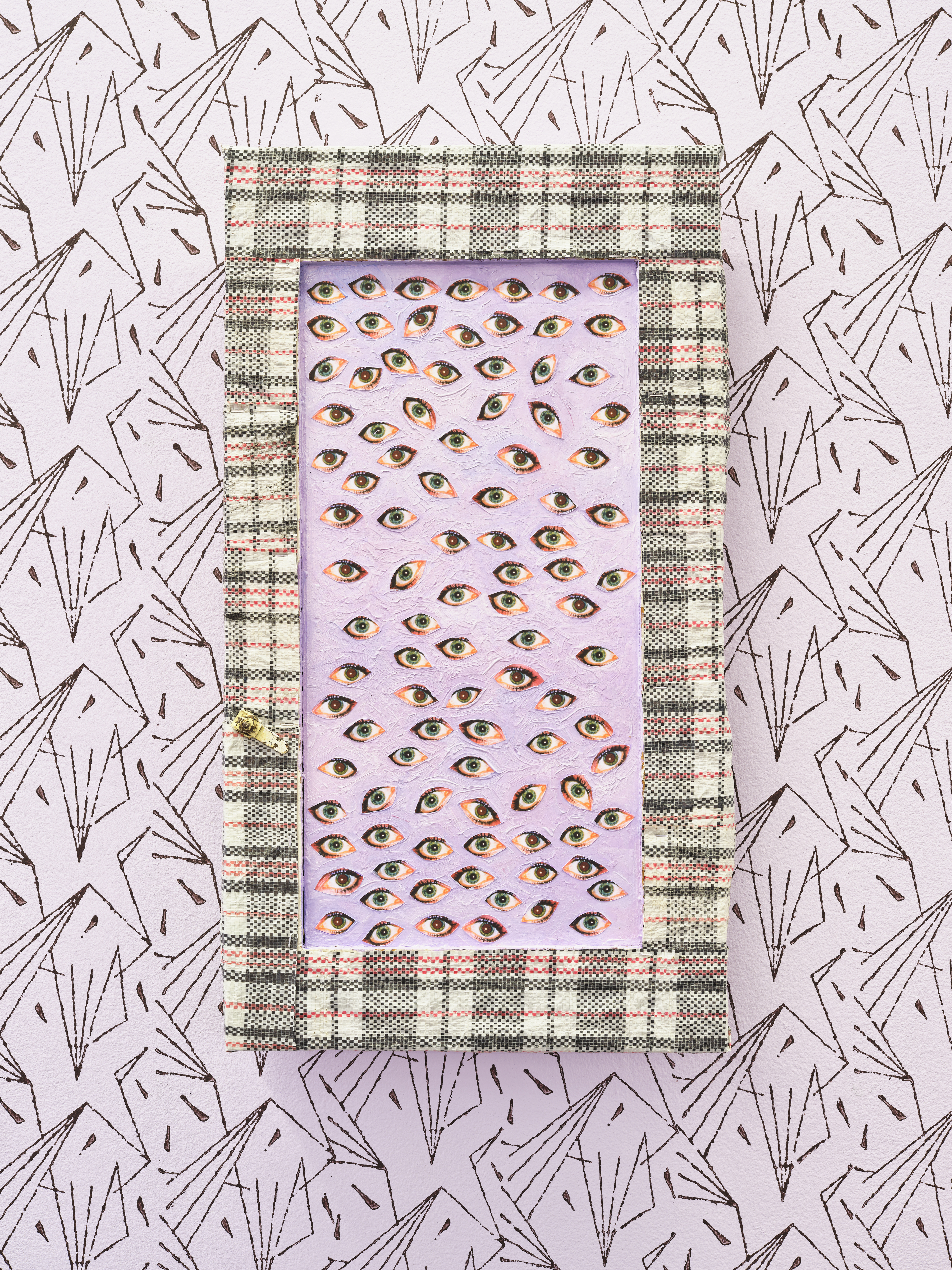
Better a bare foot than none (2025) is Katarzyna Perlak’s first public solo exhibition. It is part of a series of exhibitions responding to shifting political landscapes in Ireland and Poland curated by Marysia Więckiewicz.
For this exhibition, Perlak expands her research into Polish Pajaki—ornamental paper ‘spider’ chandeliers historically assembled for Christian, pagan, and folk celebrations. Traditionally hung as protective symbols within the home, Perlak reimagines them as queer talismans, emblematic of resistance and belonging. Composed of found objects, including artificial flowers, discarded photographs, and second-hand ornaments sourced in the artist’s hometown of Bytom, Dublin and London, these sculptures weave together the personal and the political, nostalgia and possibility.
Suspended within the Gallery, Perlak’s Pajaki sculptures require close observation, revealing layers of symbolism and significance embedded within their intricate forms. The sculpture Poplar Time (2025) becomes a meditation on domesticity and the instability that comes with displacement. The ‘spider’s’ base is made of anti-climb fencing material regularly installed around Poplar, an inner-city London suburb where the artist currently lives. The attached constellation of wristwatch parts symbolises temporality and precarity of housing in the area that is undergoing demolition. The visual vibrancy of Ruta Time (2022), with its fusion of platform shoes, kitsch flowers, and sparkly masks, intertwines folk traditions with a queer aesthetic of abundance, revealing complex and multifaceted histories.
In her textile works, Perlak delves into vernacular stories and proverbs, referencing words and phrases that convey resilience and highlight the emotional weight of what is lost or misinterpreted in translation. The tapestry titled Cos za Cos (2025), loosely translated as ‘you win some, you lose some,’ foregrounds the challenges of fully articulating one’s identity and the associated feelings of loss and longing. It incorporates the iconographic motif of a deer, a symbol commonly found in Polish ethnoart and associated with folk culture and mass-produced imagery. Perlak’s engagement with kitsch recurs throughout her practice, interrogating the boundaries between authenticity and sentimentality.
Building on her Bated Breaths series (2020–ongoing), Perlak’s embroidered handkerchiefs feature individual and collective phrases, that serve as intersections of personal history, shared memory, and cultural etiquette. Traditionally used to absorb bodily fluids and suppress emotions, handkerchiefs also function as tools of communication— from folk dances to coded LGBTQ+ identity markers. These textiles carry layered symbolic meanings, simultaneously personal and communal. In this exhibition, the handkerchiefs evolve further, embodying the shared economic precarity linked to cultural displacement. Wszędzie dobrze, gdzie nas nie ma (2025), meaning ‘the grass is always greener,’ expresses the emotional landscape of migration—homesickness, longing, and the imagined elsewhere. The repeated act of stitching the same sentence over and over becomes a meditative ritual, an intimate yet powerful expression of searching for home, capturing a stillness found in compulsive repetition.
(text written by Marysia Więckiewicz, here full version.)
For this exhibition, Perlak expands her research into Polish Pajaki—ornamental paper ‘spider’ chandeliers historically assembled for Christian, pagan, and folk celebrations. Traditionally hung as protective symbols within the home, Perlak reimagines them as queer talismans, emblematic of resistance and belonging. Composed of found objects, including artificial flowers, discarded photographs, and second-hand ornaments sourced in the artist’s hometown of Bytom, Dublin and London, these sculptures weave together the personal and the political, nostalgia and possibility.
Suspended within the Gallery, Perlak’s Pajaki sculptures require close observation, revealing layers of symbolism and significance embedded within their intricate forms. The sculpture Poplar Time (2025) becomes a meditation on domesticity and the instability that comes with displacement. The ‘spider’s’ base is made of anti-climb fencing material regularly installed around Poplar, an inner-city London suburb where the artist currently lives. The attached constellation of wristwatch parts symbolises temporality and precarity of housing in the area that is undergoing demolition. The visual vibrancy of Ruta Time (2022), with its fusion of platform shoes, kitsch flowers, and sparkly masks, intertwines folk traditions with a queer aesthetic of abundance, revealing complex and multifaceted histories.
In her textile works, Perlak delves into vernacular stories and proverbs, referencing words and phrases that convey resilience and highlight the emotional weight of what is lost or misinterpreted in translation. The tapestry titled Cos za Cos (2025), loosely translated as ‘you win some, you lose some,’ foregrounds the challenges of fully articulating one’s identity and the associated feelings of loss and longing. It incorporates the iconographic motif of a deer, a symbol commonly found in Polish ethnoart and associated with folk culture and mass-produced imagery. Perlak’s engagement with kitsch recurs throughout her practice, interrogating the boundaries between authenticity and sentimentality.
Building on her Bated Breaths series (2020–ongoing), Perlak’s embroidered handkerchiefs feature individual and collective phrases, that serve as intersections of personal history, shared memory, and cultural etiquette. Traditionally used to absorb bodily fluids and suppress emotions, handkerchiefs also function as tools of communication— from folk dances to coded LGBTQ+ identity markers. These textiles carry layered symbolic meanings, simultaneously personal and communal. In this exhibition, the handkerchiefs evolve further, embodying the shared economic precarity linked to cultural displacement. Wszędzie dobrze, gdzie nas nie ma (2025), meaning ‘the grass is always greener,’ expresses the emotional landscape of migration—homesickness, longing, and the imagined elsewhere. The repeated act of stitching the same sentence over and over becomes a meditative ritual, an intimate yet powerful expression of searching for home, capturing a stillness found in compulsive repetition.
(text written by Marysia Więckiewicz, here full version.)

